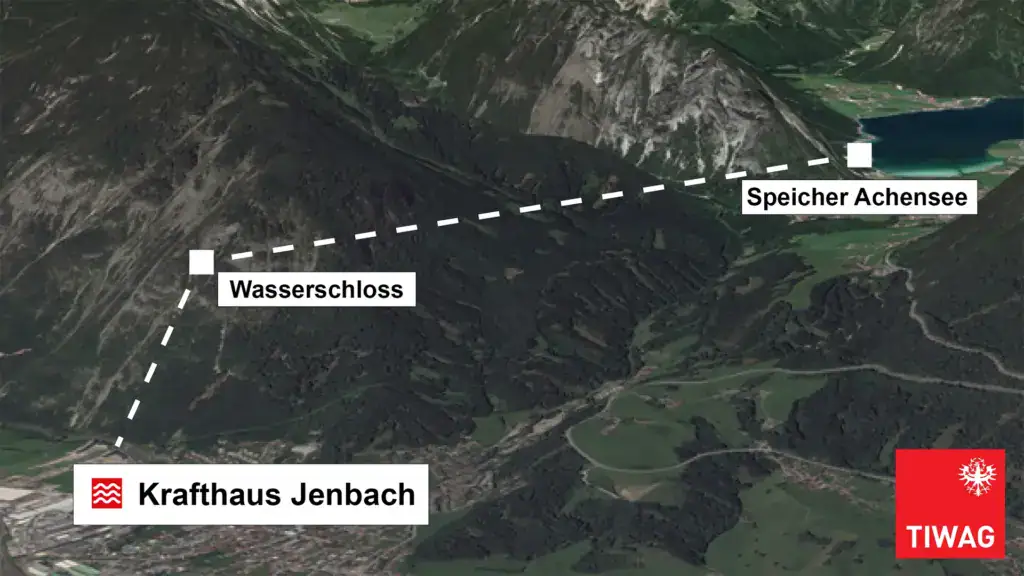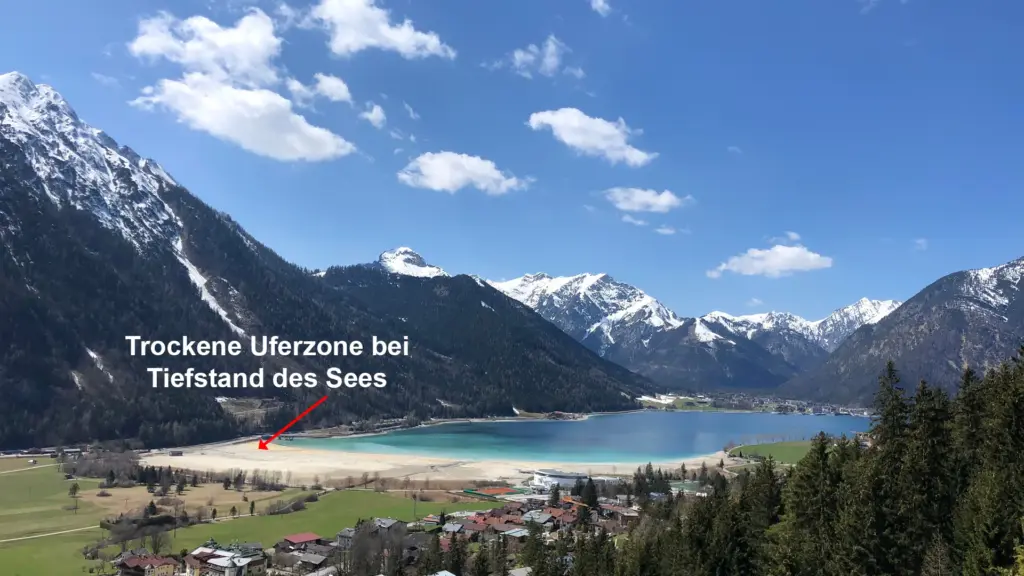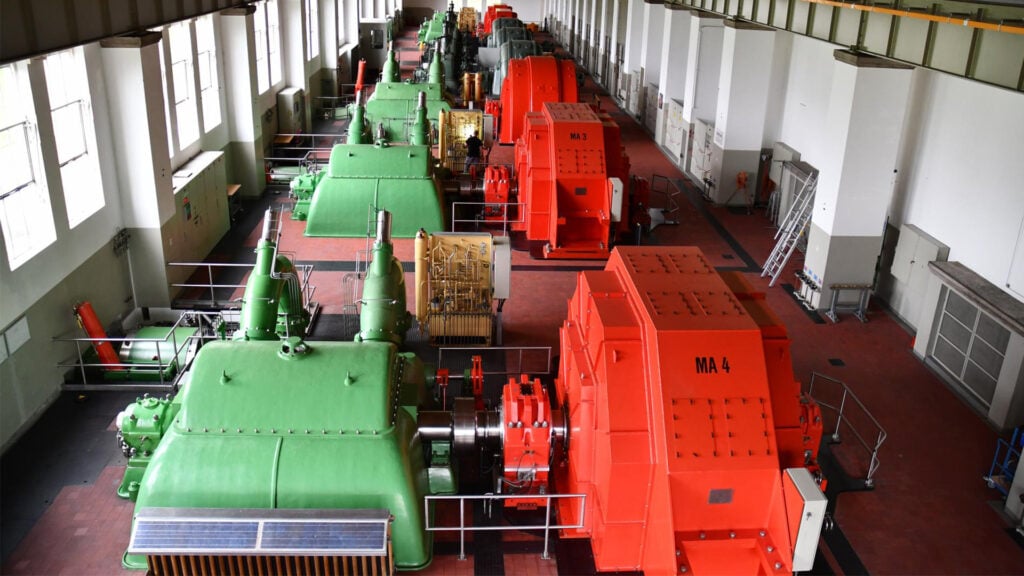The Hydrology of Lake Achensee
Fluctuations in the lake’s water level can still be observed throughout the year. The water level of Lake Achensee is generally higher in summer than in winter (TIWAG – Tiroler Wasserkraft AG). In spring, meltwater, precipitation, and inflows from surrounding streams fill the lake.
Natural tributaries such as the Oberaubach, Buchauerbach, Dalfazerbach, Wankratbach, and Pletzachbach feed into Lake Achensee. Since the commissioning of the Achensee power plant in 1927, additional artificial inflows have been created as part of the power plant system, including water diversions from the Dürrach, Kesselbach, Ampelsbach, and Unteraubach.
Lake Achensee has two outflows: the original Seeache, which flows north into the Isar River, and the artificial outflow at the southern end of the lake into the power plant. Through this outflow, water is directed toward Jenbach, causing the lake level to drop.
Particularly in the winter months from October to March, more water is drawn from the lake than flows into it, causing the lake level to drop by up to 5 meters. Theoretically, the operation of the power plant could lower the level by up to 11.5 meters. (TIWAG – Tiroler Wasserkraft AG)
Electricity from Water – The Achensee Power Plant
At Lake Achensee, the power of water is impressively harnessed: Through underground pipelines, water flows through the mountainsides into a so-called surge tank. This chamber serves as a pressure buffer to protect the turbines from damage during startup or shutdown. From there, the water plunges down to the powerhouse in Jenbach with a gross head of 390 meters—a height difference that generates a substantial amount of energy!
Up to 25 cubic meters of water per second drive the turbines here, which generate electrical energy (TIWAG – Tiroler Wasserkraft AG)
The power plant has a capacity of 79 megawatts and produces around 219 gigawatt-hours of electricity per year—enough to supply more than 62,000 households. In this way, the clear mountain water is transformed into sustainable energy for Tyrol.

This figure schematically shows the path that the water of Lake Achensee takes to generate electricity. It is led underground into a surge tank, from where it falls down to the powerhouse in Jenbach to drive turbines there. (TIWAG – Tiroler Wasserkraft AG)
Energy production at Lake Achensee has been operated for a century by Tiroler Wasserkraft AG (TIWAG), which was founded in 1924 by the city of Innsbruck together with the Province of Tyrol and a group of banks. The power plant at Lake Achensee was TIWAG’s first major project. Its construction in the 1920s was a remarkable technical and logistical achievement. To this day, the plant makes a significant contribution to Tyrol’s sustainable energy supply and stands as a symbol of hydropower use in the Alps.
The Ecology of Lake Achensee
The use of Lake Achensee as a natural water reservoir significantly influences not only its hydrology but also its ecology. Water level regulation can have major impacts on the lake’s ecosystem. Shoreline plants and animals are particularly sensitive to these fluctuations. For example, when the lake level is lowered, shoreline areas and fish spawning grounds may fall dry. This can temporarily impair reproduction and destroy habitats (Hofrichter et al. 1994). TIWAG implements environmental compensation measures to counteract these effects—including the construction of a ring sewer system in the 1990s, the creation of alternative spawning grounds, and continuous monitoring of water quality—all with the goal of maintaining and improving the good ecological state of the lake.

The photo shows the southern end of Lake Achensee in wintertime. Large bank areas are dry. The ecosystem, especially the plants and animals in the shore area, is strongly influenced by lake level fluctuations. (Image source: Own illustration)

